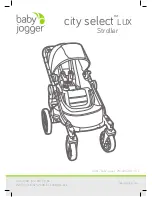
XPS-RL
Quick Start
3.0
XPS-RL Controller/Driver Documentation
To maximize the value of the XPS-RL Controller/Driver system, it is important that
users become thoroughly familiar with available documentation:
The User’s Manual & Motion Tutorial
This book contains the majority of the information about the XPS-RL system. This
reference manual also provides an exhaustive overview of the XPS-RL architecture, and
a complete description of its features and capabilities. It contains the following sections:
•
System overview (Hardware, front and rear panels descriptions, Ethernet
connection, programming).
•
Getting started guide (unpacking, inspection, system set up, connection,
configuration).
•
Software tools description (web site interface).
•
FTP (File Transfer Protocol) Connection.
•
Maintenance and service (cleaning, service, troubleshooting).
•
Explanations of XPS-RL architecture (state diagrams, motion groups, units).
•
Motion modes (move, jog, master slave, analog tracking).
•
Trajectories (line-arc, splines, PVT, PT, conventions, mathematical explanations).
•
Compensation (backlash, linear error correction, positioner/XY/XYZ mapping).
•
Event triggers (event, actions, examples).
•
Data gathering (internal and external).
•
Triggers (position compare output, position capture).
•
Control loops (XPS-RL servo loops, filtering and limitation, feed forward loops and
servo tuning).
•
Analog encoder calibration.
•
Introduction to XPS-RL Programming.
•
Appendices: hardware, general I/O description, power inhibit connector, GPIO
connectors, PCO connector, motor driver boards pinning diagrams, and analog
encoder connector.
The Programmer’s Manual
This book is the general programmer’s guide for the experienced user. It provides
explanations of all functions and a list of all API’s with complete syntax (TCL and DLL
prototypes), parameters, errors, and short descriptions. It refers to the motion tutorial for
more thorough explanations on some features. It details:
•
TCP/IP communication explanations and functions.
•
Firmware features and list of API’s by groups: General features, Positioners, Single
Axis groups, XY groups, XYZ groups, Multiple Axes groups, analog and digital
I/O’s, gathering, events and actions, TCL programming, version).
•
Examples of motion processes.
27
EDH0367En1021 — 12/17




































